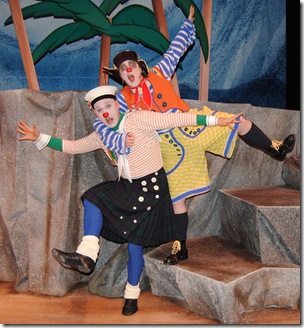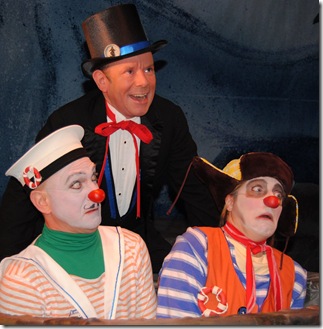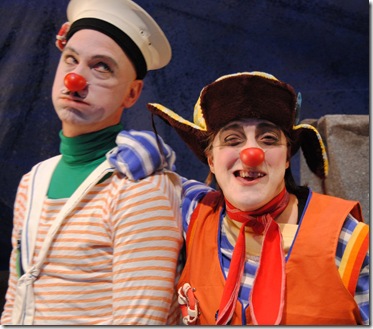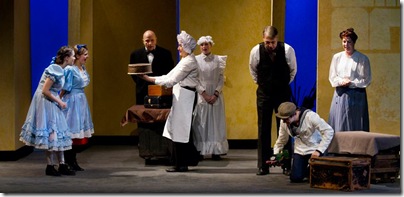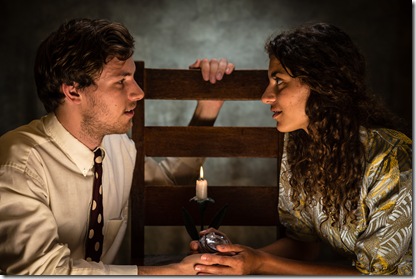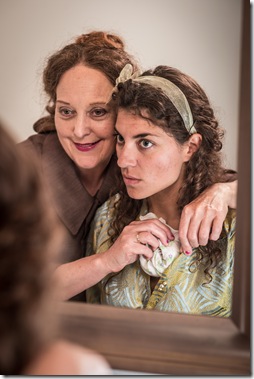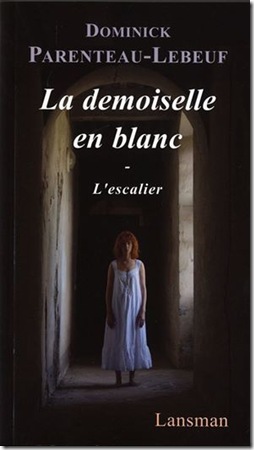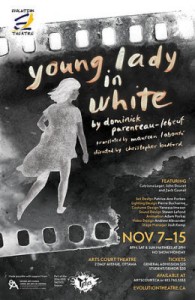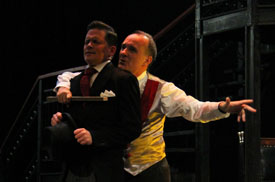Pommes and Restes: Shipwrecked on the Tempestuous Lost Island of Never: Much More Than Slapstick.
Photo: Barb Gray. Scott Florence and Margo Macdonald
What can I say about a play that within the first five minutes showers the audience with balloons and ends with the actors passing around trays of very tasty cupcakes? The world premiere of “Pomme and ‘Restes: Shipwrecked! On the Tempestuous Lost Island of Never” by A Company of Fools is partly a wacked-out version of Shakespeare’s “The Tempest” combined with The Three Stooges and Pythonesque word-play. It begins with a shipwrecked cruise ship dumping the five characters on an appropriately cartoonish desert island, designed by John Doucet.
The two clown characters are Pomme Frites, a lugubrious philosopher who wants to do “stand-up tragedy,” and ‘Restes, his none-too-bright rubber-faced sidekick. They’re wonderfully played by, respectively, Scott Florence and Margo MacDonald, co-authors of the script along with Director Al Connors. As for the script, I can easily imagine something happening in rehearsal that got the response, “Hey – that’s fun. Leave it in!”
